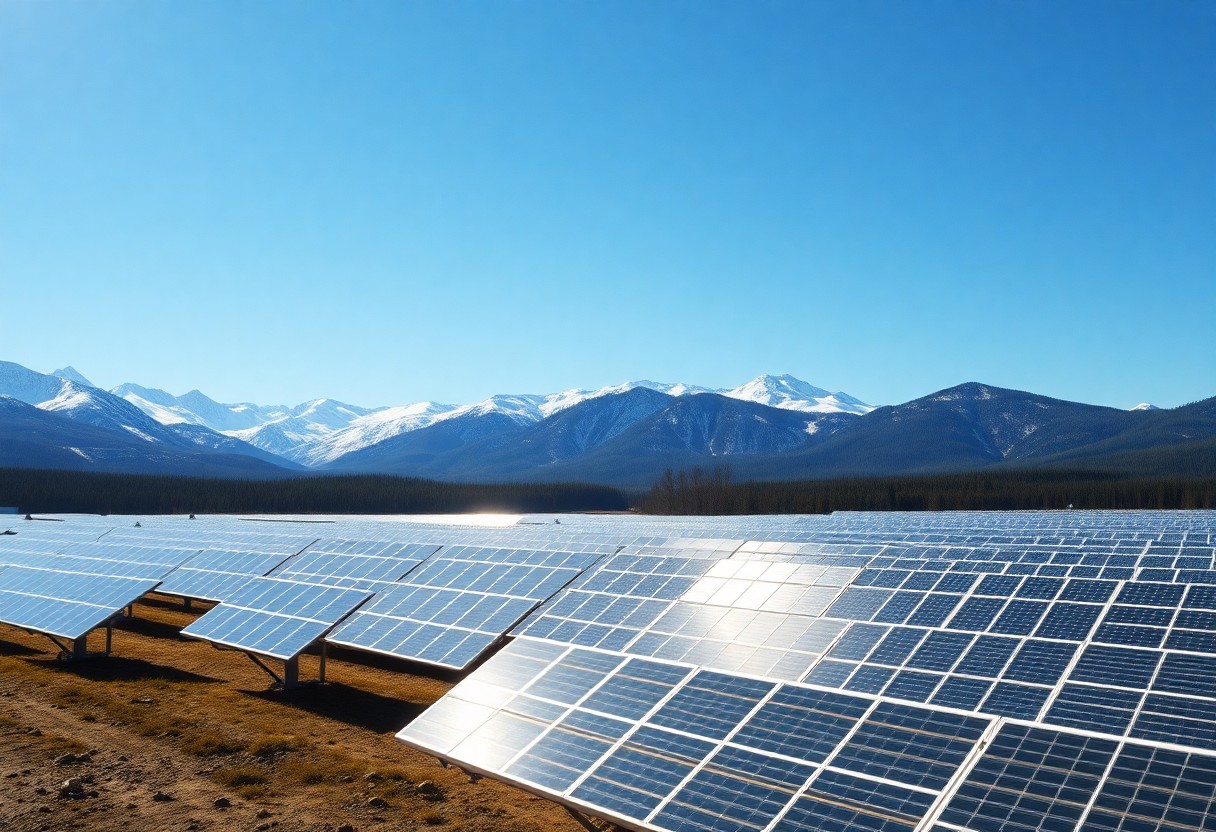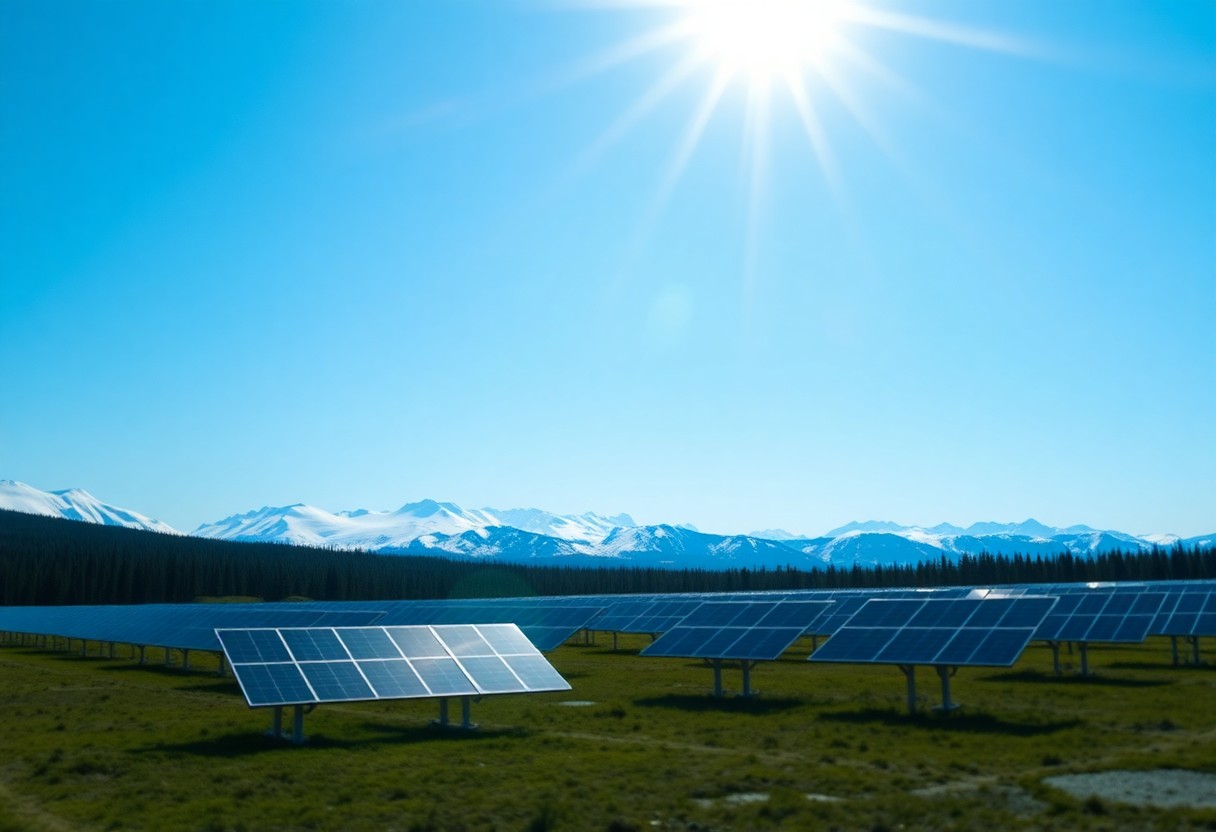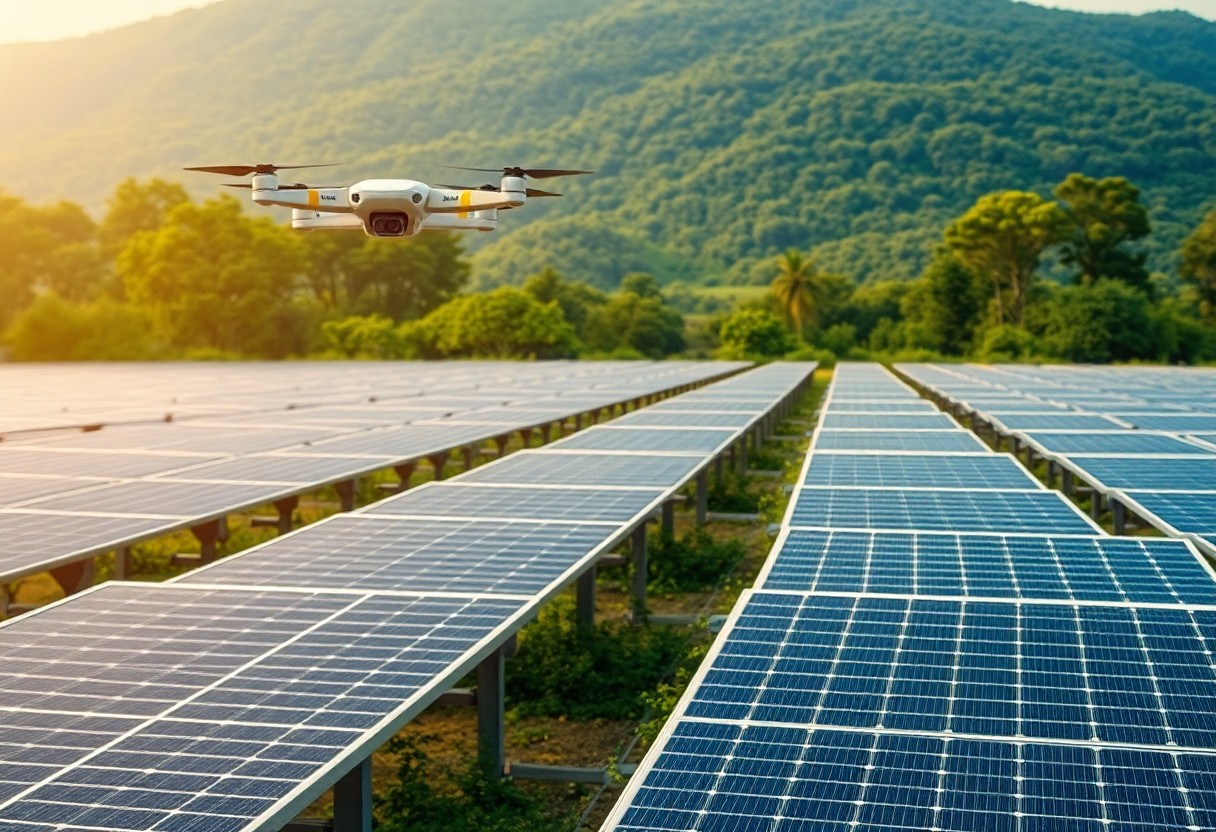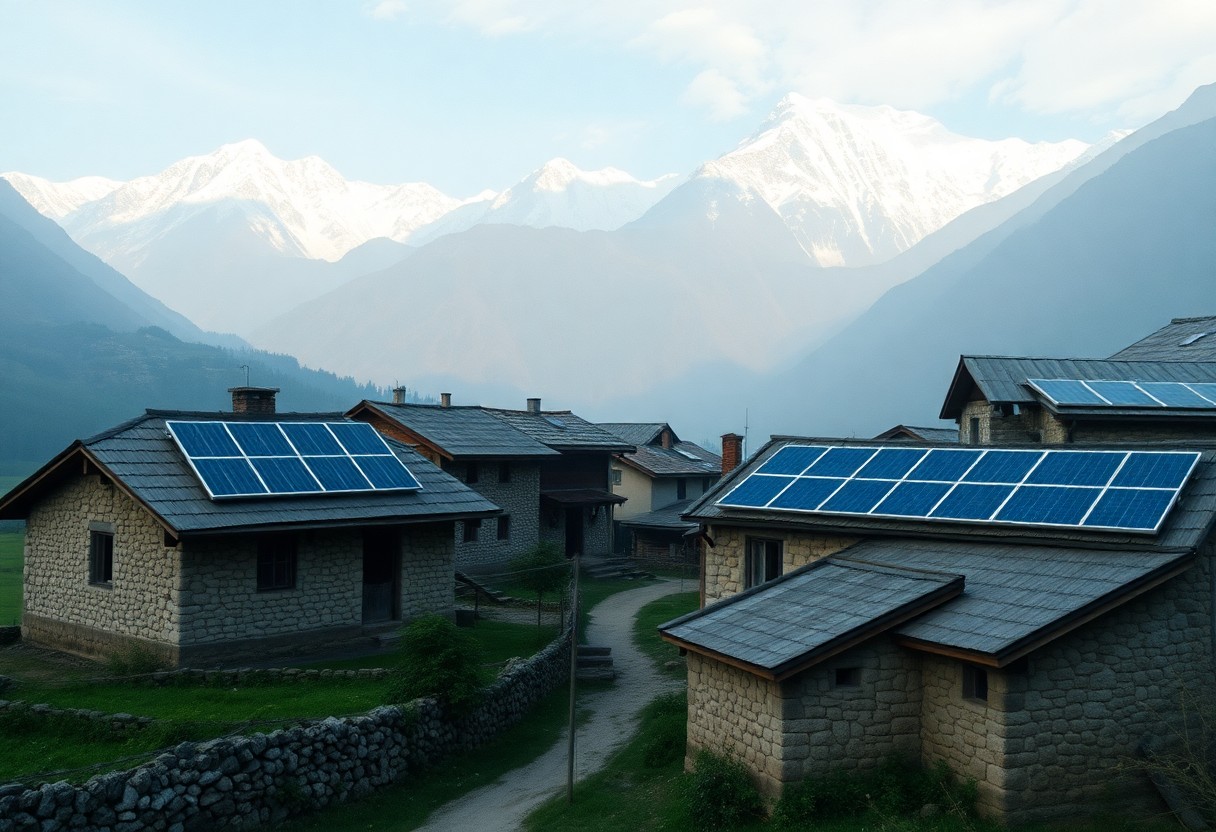Alaska’s stunning yet isolated wilderness presents unique challenges when it comes to energy access. By harnessing the power of the sun, you can promote sustainable energy solutions that support local communities while reducing reliance on imported fuel and minimizing environmental impact. This blog will explore how solar power can enhance your life in remote areas, fostering energy independence and enabling the development of vital resources in the great Alaskan outdoors.
Key Takeaways:
- Solar power can provide a sustainable and renewable energy source for remote communities in Alaska, reducing reliance on imported fossil fuels and enhancing energy security.
- By utilizing solar energy, remote Alaskan villages can promote environmental conservation, decrease greenhouse gas emissions, and support local wildlife habitats.
- Solar installations can be tailored to specific community needs, offering flexibility in energy production and allowing for hybrid systems that combine solar with wind or diesel generators to ensure reliability in harsh conditions.
Overview of Solar Power Technology
Your journey into solar power technology reveals a robust and innovative field that harnesses the sun’s energy for various applications. Solar power systems convert sunlight into electrical energy, significantly reducing reliance on fossil fuels. As technology advances, you’ll find new ways that solar energy can be utilized efficiently, particularly in remote areas like Alaska. This sustainable energy source can transform how communities operate, offering a reliable alternative even in isolated locations.
Types of Solar Power Systems
Your understanding of solar power expands with the exploration of different types of solar power systems. These systems cater to unique needs and preferences based on geographical and environmental conditions.
- Photovoltaic (PV) Systems: Convert sunlight directly into electricity.
- Solar Thermal Systems: Utilize sunlight to generate heat for various applications.
- Off-grid Solar Systems: Provide energy independence for remote locations.
- Grid-tied Solar Systems: Connect to the electricity grid for utility interaction.
- Hybrid Solar Systems: Combine solar with other energy sources for versatility.
The diversity of these systems ensures that you can find a solar power solution tailored to your specific energy needs.
Advancements in Solar Technology
Any discussion of solar power is incomplete without addressing the significant advancements in solar technology. Innovations have led to increased efficiency in energy conversion, storage capabilities, and even the development of flexible solar panels that can be integrated into various surfaces.
But as advancements continue, you must stay informed about the potential challenges and risks associated with solar power. This includes ensuring the environmental impact of solar installations is minimal and understanding the cost implications. These advancements also bring numerous benefits, making solar power a leading option for energy sustainability. Each improvement paves the way for broader adoption, especially in remote regions like Alaska, where your energy needs can be met effectively without compromising the environment.
Benefits of Solar Power in Remote Areas
You will find that solar power offers significant advantages in remote areas, particularly in Alaska’s wilderness. With its renewable energy source, solar power can provide a consistent and dependable energy supply, reducing reliance on traditional fuel sources. This not only lowers energy costs but also boosts economic stability by creating jobs in the region. Furthermore, solar systems require minimal maintenance, making them ideal for areas with limited access to services. Overall, adopting solar power can greatly enhance the quality of life and sustainability in these isolated communities.
Energy Independence
Energy independence allows you to harness solar power as a self-sufficient energy solution, significantly reducing your reliance on expensive and often unstable fuel supplies. In remote areas, where traditional power sources can be limited or absent, having your own solar system empowers you to generate and manage your energy needs independently. This not only enhances your energy security but can also lead to cost savings over time, freeing up your resources for other imperative needs.
Environmental Impact
On the other hand, utilizing solar power in remote areas has a remarkable effect on the environment. By generating energy through solar technology, you can significantly reduce your carbon footprint and minimize harmful emissions associated with fossil fuels. This transition to renewable energy helps protect the pristine wilderness in Alaska, preserving its rich biodiversity for future generations.
Also, solar power contributes to protecting the delicate ecosystems found in Alaska’s remote wilderness. By minimizing pollution and habitat disruption often caused by traditional energy extraction and production methods, you support the health of local flora and fauna. The adoption of solar energy in these areas leads to more sustainable land management practices, imperative for maintaining the natural beauty and integrity of Alaska’s unique environment.
Economic Implications
Keep in mind that the adoption of solar power in Alaska’s remote wilderness has far-reaching economic implications. By reducing dependency on costly fuel imports, local communities can save money, allowing funds to be redirected toward necessary services and infrastructure improvements. Furthermore, solar technology has the potential to stimulate greater self-sufficiency, fostering a sustainable economy in previously isolated areas.
Cost Efficiency of Solar Solutions
Solar energy systems are becoming increasingly cost-effective, making them an attractive option for remote areas in Alaska. As technology advances, the upfront costs of solar panels and installation are decreasing, while the potential for long-term savings grows. With lower maintenance costs and reduced reliance on expensive diesel fuel, solar solutions offer a viable economic alternative for your energy needs.
Job Creation in Renewable Energy Sector
On the employment front, solar power can significantly impact job creation in Alaska’s renewable energy sector. As more communities turn to solar, you can expect a rise in demand for skilled workers to install, maintain, and operate these systems, ultimately leading to a diversified job market.
Cost-effective energy transition results in the generation of numerous jobs within the renewable energy sector. Local technicians and engineers are needed to install and maintain solar systems, providing you opportunities for training and employment in these specialized fields. Furthermore, the shift towards solar energy encourages local businesses to emerge, from manufacturing components to providing logistics and support services. Investing in solar not only benefits your wallet but also strengthens your community through the creation of stable employment opportunities that contribute to a healthier economy.
Challenges of Implementing Solar Power in Alaska
To effectively harness solar power in Alaska’s remote wilderness, you must navigate a variety of challenges that can impact adoption and efficiency. Factors like harsh weather conditions, limited sunlight during winter, and high installation costs complicate the integration of solar technology into these isolated communities. Despite its promise, understanding these obstacles is key to developing viable solutions.
Geographic and Climatic Considerations
An understanding of Alaska’s unique geographic and climatic landscape is important when considering solar power implementation. The state’s vast, rugged terrain and extreme weather conditions can significantly affect solar panel efficiency. Locations may experience limited sunlight in winter months, which necessitates careful planning to ensure adequate energy supply year-round.
Infrastructure Limitations
Climatic challenges also contribute to the infrastructure limitations you may encounter when implementing solar energy solutions in Alaska. Many remote areas lack reliable roads and communication systems, making the transport of solar equipment and the installation process difficult. Furthermore, existing energy systems may not be equipped to support additional solar technologies without significant upgrades, complicating efforts to transition to renewable energy sources.
In addition, the lack of accessible service and maintenance options in remote Alaskan communities can pose a challenge. Should solar panels require repairs or maintenance, you might face delays due to harsh weather or transportation difficulties, impacting energy reliability. It is important to consider these logistical hurdles as you evaluate solar power solutions for your community, as addressing them will be vital for sustainable implementation and long-term success.
Case Studies: Successful Solar Projects in Alaska
Once again, Alaska is making strides in harnessing the power of the sun. Numerous solar projects have emerged, demonstrating their feasibility and potential in this remote region:
- The Sunshine Solar Project in Anchorage, utilizing 1,000 solar panels, generates over 300,000 kWh annually.
- The Kasigluk Project, featuring a hybrid system of solar and wind, provides energy for over 200 residents, resulting in a 50% reduction in fuel costs.
- The Willow Solar Farm boasts 2 MW capacity, which offsets over 1,200 tons of CO2 emissions each year.
Community-Based Solar Initiatives
At the forefront of change, community-based solar initiatives empower locals to embrace renewable energy. By involving residents in planning and implementation, these projects foster a sense of ownership and responsibility. Notably, community solar gardens in villages like Hoonah have made solar power accessible, giving participants direct benefits while promoting sustainability.
Government Support and Partnerships
Solar initiatives in Alaska thrive with significant support from local and federal government bodies. This backing, including subsidies and grants, accelerates solar adoption in rural areas. By fostering partnerships with private sectors, more projects are underway, expanding your access to clean energy solutions.
Projects in Alaska benefit immensely from strong government support, ensuring that resources are allocated to develop sustainable energy. Collaborations with organizations like the Alaska Energy Authority and federal programs have resulted in substantial funding opportunities. This support has led to increased solar installations, promoting sustainability while decreasing reliance on costly fossil fuels. Investors see the potential for economic growth, as these partnerships pave the way for a more resilient energy infrastructure in remote areas. Ultimately, such initiatives illustrate the enormous possibilities for your community’s energy future.

Future Prospects for Solar Energy in Alaska
Not only does solar power offer a sustainable solution for Alaska’s remote wilderness, but its potential continues to grow. With increased research and development, solar technology can evolve to fit the unique challenges posed by Alaska’s landscape and climate. Your community can be part of a movement that embraces solar energy, ensuring a brighter future for both the environment and local economies.
Innovations on the Horizon
Before exploring the benefits of solar energy, you’ll want to understand the upcoming innovations that can enhance its adoption in Alaska. From improved solar panel efficiency to energy storage solutions, these breakthroughs should make solar power more accessible and reliable for you, even in harsh conditions.
Policy Recommendations
Innovations in solar technology are closely tied to supportive policy frameworks. You can advocate for increased state incentives and funding that promote solar energy projects in remote areas. Strong policies can also encourage partnerships between local governments, tribal organizations, and private enterprises, facilitating the deployment of renewable energy resources that benefit your community.
Prospects for solar energy in Alaska hinge on incorporating state and local policies that foster innovation and investment. By supporting initiatives that provide financial incentives for solar installations, you can help lower costs and increase adoption rates. Moreover, encouraging collaboration between different stakeholders can promote knowledge sharing and resource pooling, maximizing the potential of solar energy to create a resilient energy landscape in your remote regions. Prioritizing education and awareness about solar technologies will enable you to make informed decisions, allowing your community to thrive sustainably for years to come.
To wrap up
Summing up, solar power offers you a sustainable and efficient way to meet your energy needs in Alaska’s remote wilderness. By harnessing the sun’s energy, you can reduce dependency on fossil fuels, lower energy costs, and create a more reliable power source for off-grid living. Additionally, solar installations can support local economies and encourage self-sufficiency in energy production, allowing you to maintain a harmonious relationship with the pristine Alaskan environment. Embracing solar power not only benefits you but also contributes positively to the broader ecosystem.
Q: How can solar power benefit remote communities in Alaska?
A: Solar power can provide a sustainable and reliable source of energy for remote Alaskan communities, where access to traditional energy sources like diesel fuel can be limited and expensive. By harnessing sunlight, these communities can reduce their reliance on fossil fuels, lower energy costs, and decrease their carbon footprint. Additionally, solar energy systems require minimal maintenance and can be installed in various locations, making them ideal for the diverse and often harsh landscapes found in Alaska’s wilderness.
Q: What are the environmental advantages of utilizing solar power in Alaska’s wilderness?
A: Utilizing solar power in Alaska’s wilderness minimizes environmental impact, as it helps reduce greenhouse gas emissions associated with fossil fuel combustion. Solar power generation does not produce air pollutants or contribute to climate change, promoting better air quality and protecting wildlife habitats. Additionally, solar installations typically have a smaller environmental footprint compared to traditional energy infrastructures, such as pipelines or large power plants, lessening the disturbance to natural landscapes and ecosystems in remote areas.
Q: Are there any challenges in implementing solar power systems in Alaska’s remote areas?
A: Yes, several challenges exist when implementing solar power systems in remote Alaskan areas. One major challenge is the variable sun exposure due to extreme weather conditions and long winter months with limited sunlight. This necessitates the use of high-quality solar technology and battery storage systems to ensure a consistent energy supply. Additionally, logistical issues related to transporting solar equipment, sourcing qualified installation professionals, and ensuring ongoing maintenance in remote locations can complicate deployment. Nevertheless, with careful planning and investment, these challenges can be addressed effectively.


